I made soap.
First you dissolve lye (sodium hydroxide) in water. I used 85 g of lye in 225 ml of water. Lye is a very nasty, strong chemical, and it is imperative that you wear gloves and eye protection when handling it. You put the lye into the water, never ever EVER the other way around, or it might volcano up and burn you. It gets VERY hot, VERY fast, all by itself, in addition to being highly caustic and giving off fumes. I did this part of the process outside.
Love those exothermic reactions. Be careful.
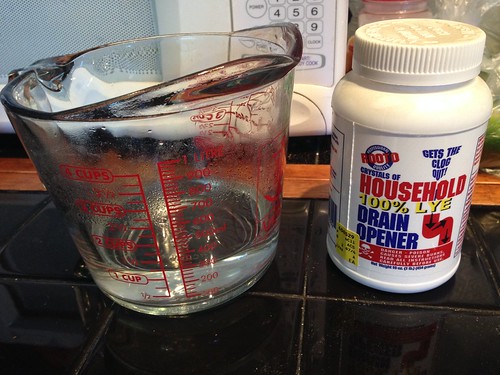
I had a hard time finding lye in my town, because it’s used to make methamphetamine. None of the supermarkets or big box stores carry it, but I finally found it at a small hardware store.
You have to let the lye solution cool- it spiked up to almost 200 F in less than a minute! While it’s cooling, you melt the oils (if necessary). For this batch I used oils which are solid at room temperature: 175g of coconut oil and 425g of lard. Yes, lard. I have never in my life bought a container of lard, but now I have. Apparently it makes good soap. So there you go.
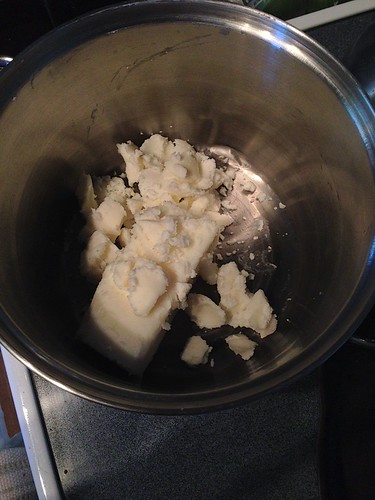
When the lye solution and oil are both about 110 F, it’s time to combine them. You carefully pour the lye (no splashing!) into the oils, and stir. I used my spiffy little immersion blender because otherwise I would have been mixing by hand for more than half an hour. I used it in short bursts interspersed with hand mixing. This combines the lye and oil, and the reaction starts.
The thing to watch for is “trace.” This is when the mixture starts to look like pudding and will hold the line of a dribble on its surface. You don’t want to mix too vigorously or too fast, because depending on the recipe the mixture might get to trace very quickly and you wouldn’t be able to get it into the mold before it sets up. Here you can see the outline of the mixer head left in the goop after I lifted it out. That's trace.
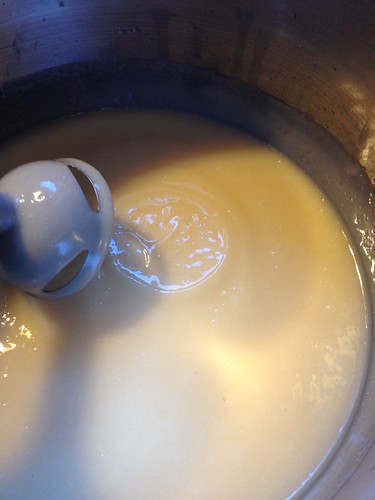
It took my soap less than 10 minutes to get to trace, then I quickly blended in some lime and sweet orange essential oils just for fun and poured it into the mold. I have a very high-tech mold, as you can see.
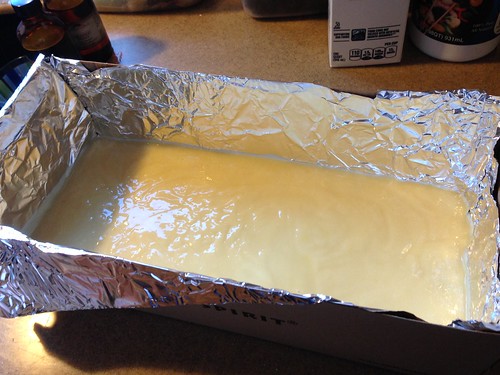
It's just a shoe box lined with aluminum foil with a layer of plastic wrap on top. You DON'T want the raw soap to come in direct contact with the foil because lye will react with aluminum, eating it away and releasing hydrogen gas. I used the aluminum liner because it's a pretty flimsy box and I thought it would make the sides more rigid, but I don't think it was necessary and I won't do that next time. Then I wrapped the box in towels for insulation and left it for 24 hours to let the saponification magic work.
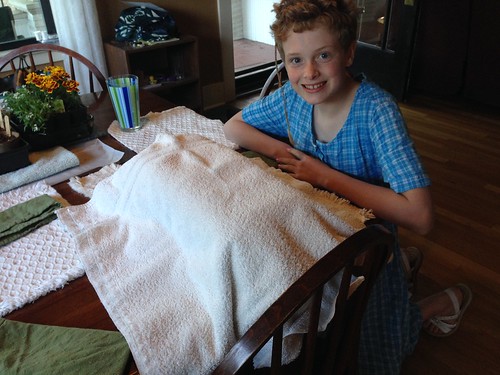
I unmolded it tonight and cut it into bars.

A little wobbly, but rustic is good, right? Even though the bars are somewhat hard after only a day, they're not ready to use yet. They need time to allow the saponification process to complete and to fully harden. So I stood them up in the box lid and stuck it in the back of my cupboard to cure. They'll be ready to use in a month, give or take.
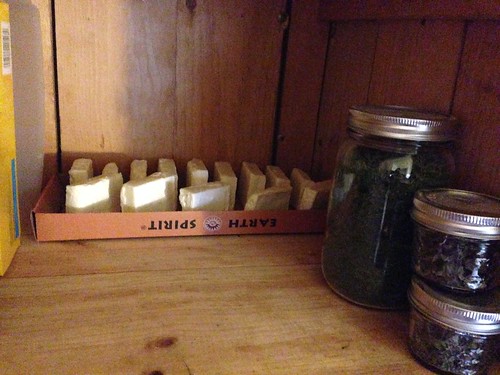
This was really easy, and it’s something I’ve always wanted to try. The possibilities of fragrance and additive combinations are virtually endless. I think peppermint soap may be next. I’m not really a perfumy froo-froo kind of girl -- I tend to buy unscented if it’s an option -- but this was fun!

No comments:
Post a Comment